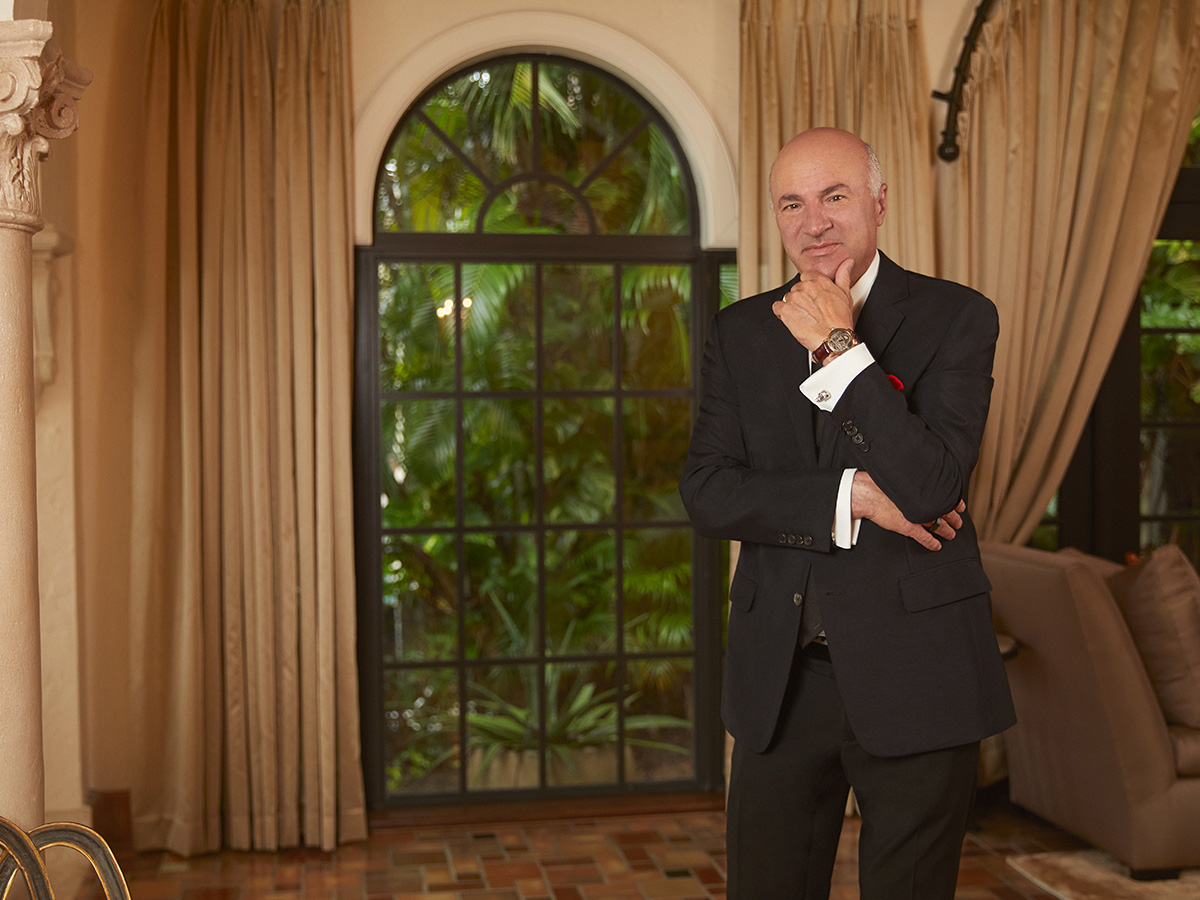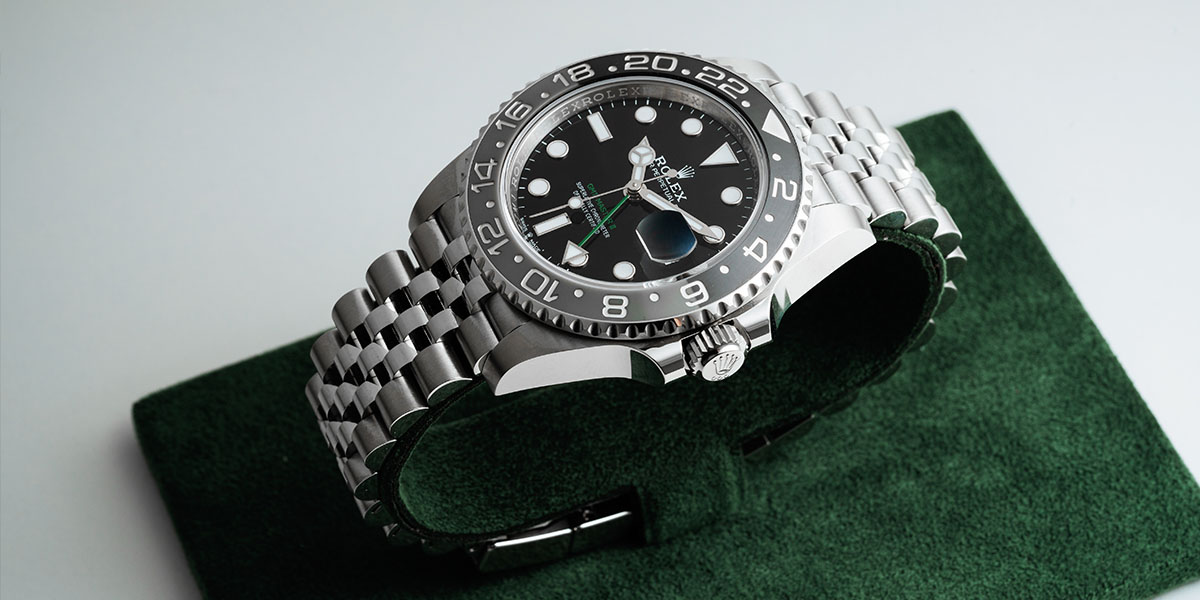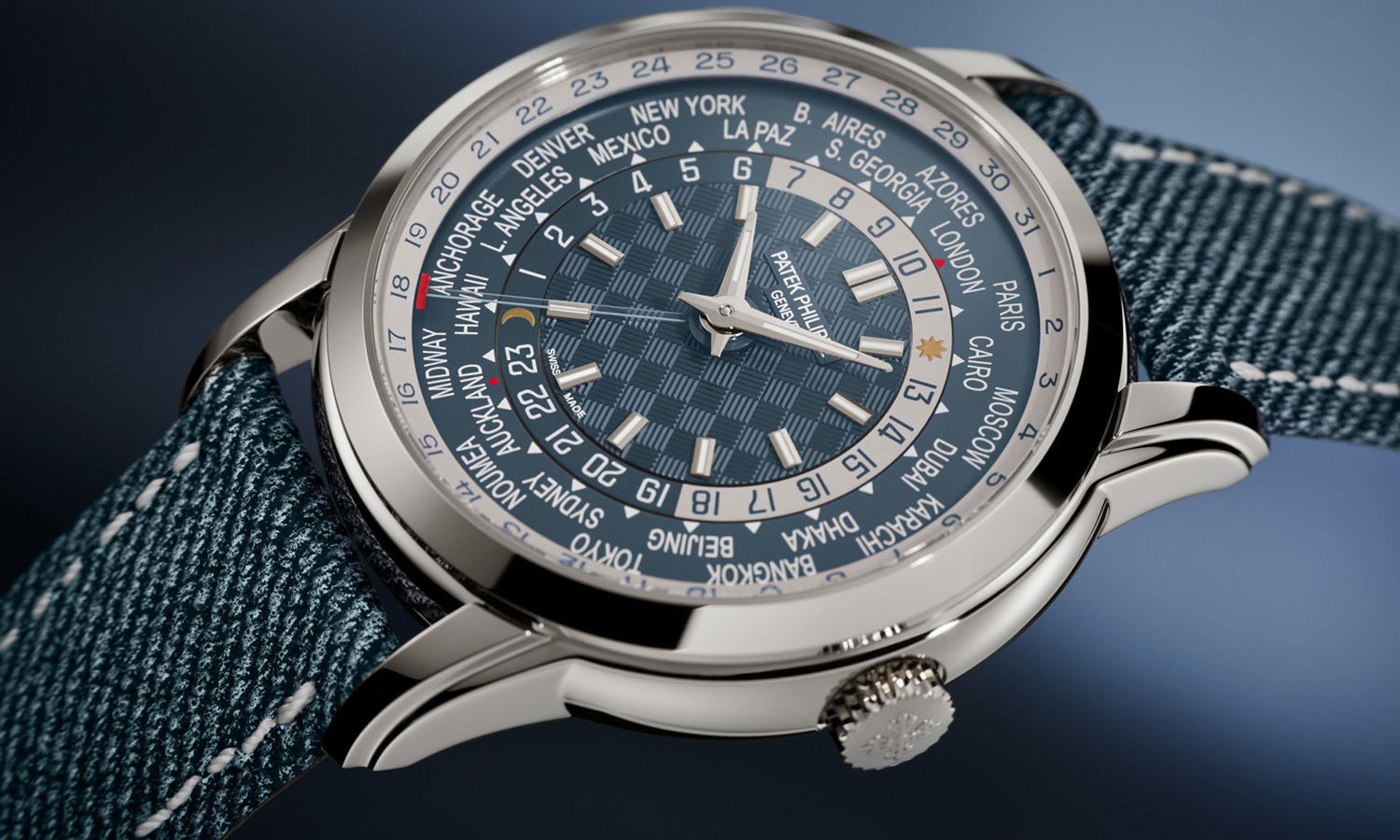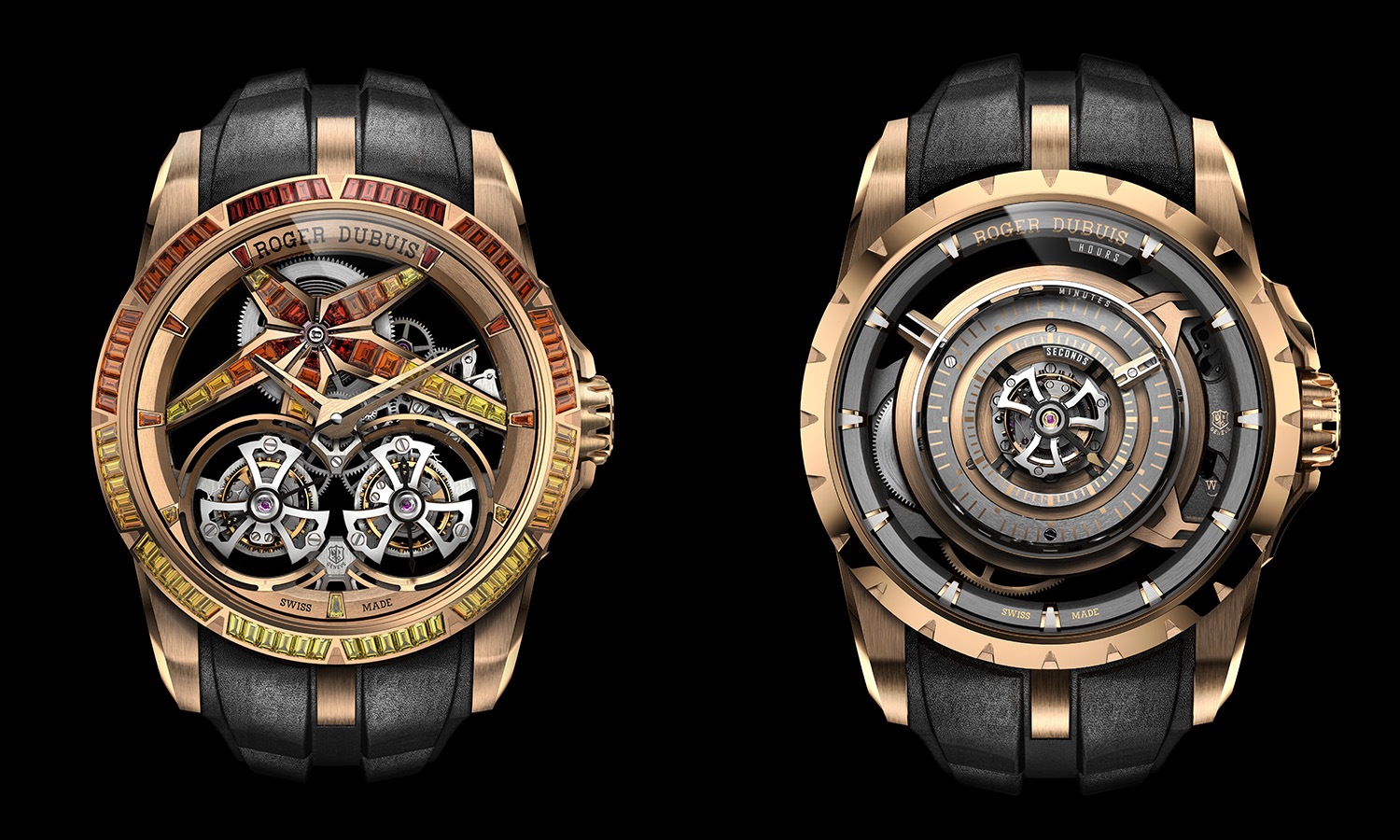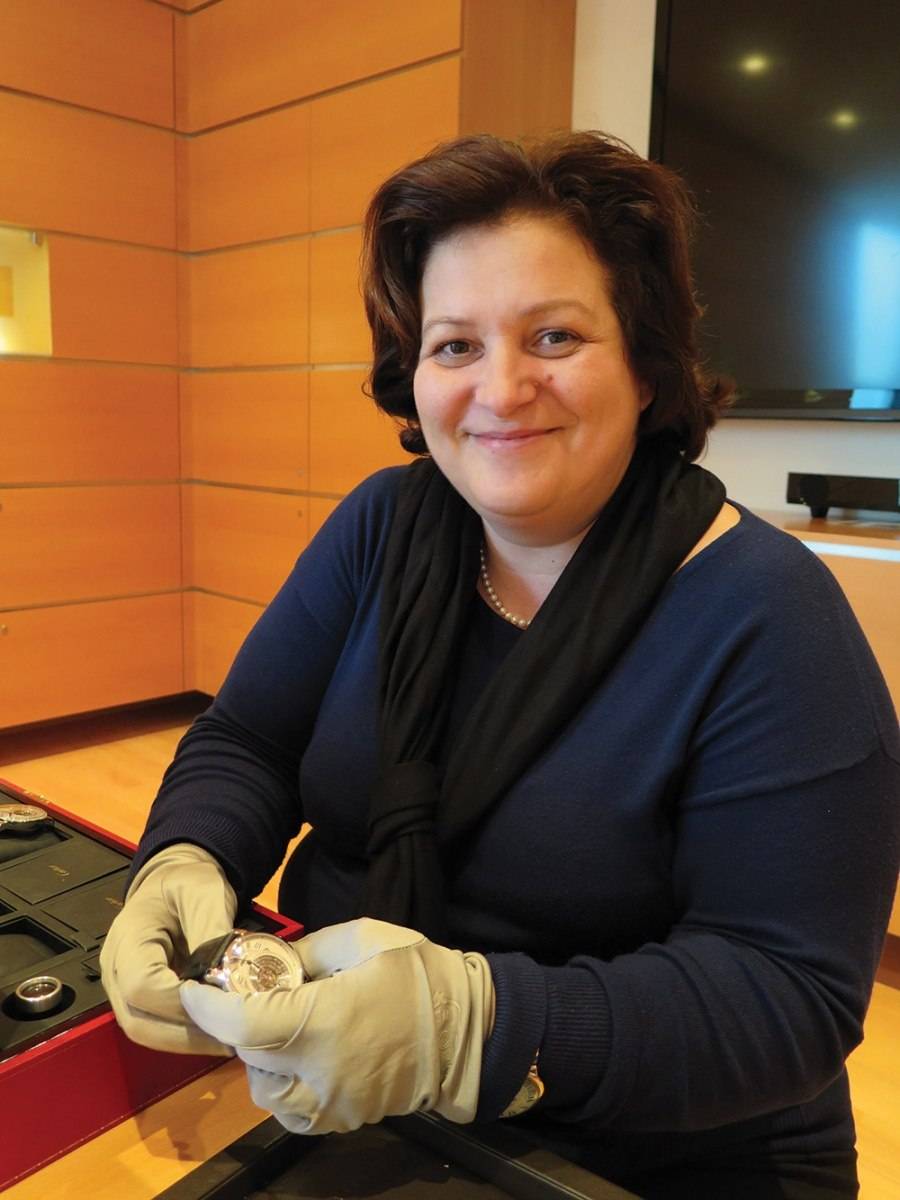
Carole Forestier-Kasapi: Cartier’s Queen of Complications
Carole Forestier-Kasapi has been making watches at Cartier since 1999, and has been Director of Movement Creation since 2005. She and her department of engineers and watchmakers are responsible for creating new calibers for Cartier in its La Chaux-de-Fonds manufacture. This includes direction for every stage of development, from design and industrialization to prototyping, testing and quality control. Under her direction, the brand has launched 29 new movements in the fine watchmaking division, including five this year, and 50 new references.
In an industry populated mainly by Swiss men, Forestier-Kasapi is proudly French and female – and considered a watchmaking genius by her peers. Certainly she is one of the most creative inventors in this new golden age of watchmaking. Her method is to first understand everything there is to know about traditional watchmaking, and then to do it differently, to question everything.
Haute Time: Can you tell us how you got started in the watch world?
Carole Forestier-Kasapi: I am only just getting started. I am still learning! But I was born into a watchmaking family. My father, mother and brother were watchmakers. It’s part of my culture, my roots. At the beginning, I learned from my father. At 16, I left Paris to go to La Chaux-de-Fonds to start watchmaking studies. I stayed because all the manufactures are in Switzerland.
HT: You are from Paris then?
CFK: Yes. I am from Paris – I am not Swiss, I am not a man. I am just a particular person in watchmaking!

HT: Not just any person in watchmaking we would argue! What is the process of bringing a watch from the idea stage through development to production, and how long does it take?
CFK: It takes between three to five years to develop a movement. We are already working on what will be launched in 2019. Each week we have a studio meeting. We spend an entire day together: my team of engineers, the designers from Paris and Geneva, and the marketing team. We discuss each project, working on all the details, aesthetic, color, technical, launch date…everything.
HT: Have there ever been disagreements in these meetings?
CFK: Sometimes it’s not only a discussion, but a fight! [laughing] But it’s always for good reasons. Sometimes we have to decide to change the timeline of a movement from one year to another, or to change the name but it’s always for a good reason. Sometimes my concept for a watch is too thick because it will be a feminine watch, or we decide to change a function.
HT: Under your supervision, Cartier’s Fine Watchmaking Division has launched 29 new movements and 50 new references since it was established in 2008. Can you continue at this pace? What is your mandate?
CFK: There is no set mandate, but what I can say is that Cartier has a big capacity for movement development. We have a big team of technicians (35) and depending on the year and depending on the
movement, we are able to develop around four to six movements per year.
But there is also a balance between new concepts and more accessible collections. A lot of people say that we have beautiful offers this year, with a balance between very commercial pieces, like the Calibre de Cartier Diver, the new Tortue and the Ballon Blanc, and very high-end pieces, like the Astrocalendaire and the Métiers d’Art collection.
HT: What was the inspiration for this year’s new masterpiece, the Astrocalendaire Perpetual Calendar Flying tourbillon?
CFK: The idea was to find a new way to combine a tourbillon and a perpetual calendar, and to find a different way to play with these two displays. Because I love the 3D effect, we started to play with different layers as we developed the mechanisms. We decided to use the three bridges, each on its own level, for each function of the perpetual calendar, rather than having a single-dimension flat dial. It just naturally resulted in a design that happens to resemble an amphitheater or an arena. The real inspiration, however, was the traditional perpetual calendar. You have to first research what perpetual calendars are in the whole history of watchmaking to be able to create a new one. I don’t know how to work in another way. This is my function. I need this cultural base of particular mechanisms to be able to create something afterwards. Without it, it’s impossible for me.
HT: What are the advantages of the all-wheel construction of the movement, and how does it work?
CFK: Blue PVD windows revolve around the indications on the tiered bridges to frame the indications. A patented central wheel with retractable teeth – the brain, as we call it – controls the perpetual calendar function. Because it is all gears – there are 67 gears, compared with the 30 gears and the usual levers and springs of a perpetual calendar – there is no risk of damaging the mechanism if the wearer sets the indications. And because the movement uses only wheels, the torque required from the mainspring is more constant, resulting in an 80% improvement in amplitude, which is directly related to accuracy. It also means that the indications can be set directly from the crown instead of the usual hidden pusher.
HT: What was the reaction to the watch when it was launched at this year’s Salon International de la
Haute Horlogerie?
CFK: It has generally been, “Wow, you have reinvented the perpetual calendar.” The mechanism is totally new. It’s out of the box if you compare it with all the history of perpetual calendars. You have nothing to compare with this one in terms of watchmaking solutions, and I love the spirit to bring something new to watchmaking.
HT: Is this the mandate at Cartier, to create something new, by recreating something traditional?
CFK: Yes, creativity is the main force. There are a lot of codes with Cartier – there is always a cabochon on the crown, there are always blue hands, always Roman numerals and a railway track index – but always with creativity. For me it’s like if we are looking at art in Japan. They are really in deep with tradition, but there is always something new inside. It’s important to keep this spirit in the Maison Cartier. I can’t imagine Cartier without it.
HT: Tell us about the new Rotonde de Cartier Earth and Moon “On Demand” Watch, in which a disk set with lapis lazuli serves as the phase of the moon.
CFK: It’s always a play with the tourbillon, this time combining it with a moonphase indication in a way that the tourbillon itself represents the moon, so you can use your tourbillon for something new. I wanted to do something very big with the display compared with the traditionally very small aperture, something creative and new, something unusual. You have to activate the pusher at 4 o’clock to see the moonphase indication.
HT: What are your two favorite introductions from this year, from a technical and an aesthetic point of view?
CFK: Technically, it is the masterpiece, of course, the Astrocalendaire, because as I mention, it’s totally out of the box. And if I had to choose one watch based on aesthetics, it would be the new Tortue because I love this case. It is more elongated, more flat, and the opening of the dial is bigger than the classic one. So it’s more modern. It’s just a question of aesthetics for that one.
HT: The ID One and ID Two watches were incredible concepts. When can we expect ID Three?
CFK: I don’t know the date right now, because we are testing some parts, so it depends on those results. But not before 2016.
HT: What is the concept you are working on for that watch?
CFK: Oh, you can’t imagine!
 SIGN UP
SIGN UP




